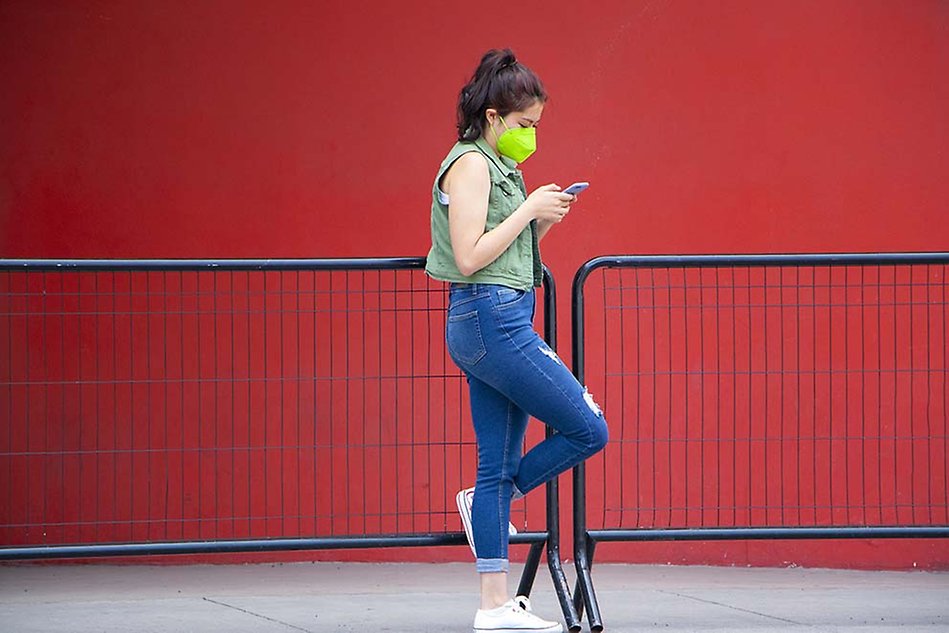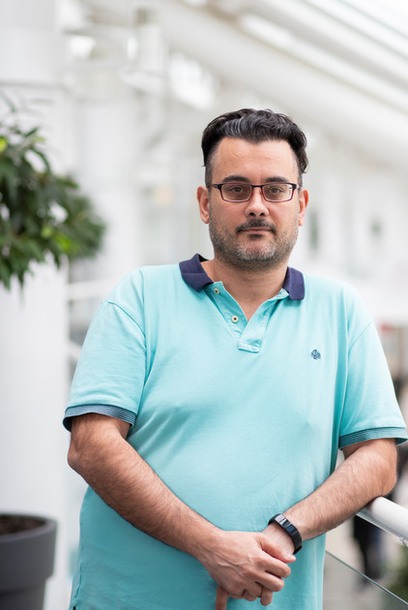Research about face recognition when using a mask
The Swedish Research Council has granted 3,6 million SEK over three years for a new research project at Halmstad University. The project goal is to provide reliable methods for face recognition when wearing a mask by analysing the facial area surrounding the eyes.

During the Covid-19 pandemic, the usage of face masks has increased greatly. This complicates visual face recognition, for examples via smart phones. Researchers at Halmstad University are starting a new project to develop biometric analysis methods of facial images of the area around the eyes. This area is called the ocular region.
“We will use AI, specifically deep learning solutions such as convolution neural networks, to analyse ocular images. The goal is to provide reliable methods for face recognition when using a mask”, says project leader Fernando Alonso-Fernandez, Associate Professor in Computer Vision and part of the Center for Applied Intelligent Systems Research (CAISR).
Mimicking the human brain
An artificial neural network is a computing system inspired by the structure of the human brain. The network is based on a collection of connected units called artificial neurons that can submit signals to each other. An artificial neural network is trained to solve a particular problem by processing examples and is not programmed after specific rules. It can for example recognise patterns in a large amount of data or it can create predictions. Convolution neural networks (CNN) is a type of neural network used in image recognition and analysis that is specifically designed to process pixel data.
“When using CNN in hardware constrained environments, you must consider the limitations in computing capabilities and storage. Typical CNN’s occupy hundreds of megabytes, which are infeasible to embed in downloadable applications. This restriction adds to the already difficult task of processing face images captured in-the-wild with smartphones, especially if the face is partially occluded with a mask. We hope to overcome these issues with our research”, says Fernando Alonso-Fernandez.

Fernando Alonso-Fernandez.
Can be used to determine age
Another goal in the research project is to estimate so-called soft biometric indicators using the ocular region of the face. Example of soft biometric indicators are gender, age and ethnicity. These indicators can be used in a range of different applications, for example age-dependent access, location of specific individuals in video streams, or child pornography detection.
– This part of the project is very unique. The use of ocular images for soft biometric indicators using deep learning methods is highly unexplored, says Fernando Alonso-Fernandez.
Text: Louise Wandel
Photo: Ida Fridvall and Pixabay
More information
Research project: Facial Analysis in the Era of Mobile Devices and Face Masks External link.
The Center for Applied Intelligent Systems Research (CAISR) External link.
The School of Information Technology External link.
News article 2020-11-03: Increased security with facial recognition

